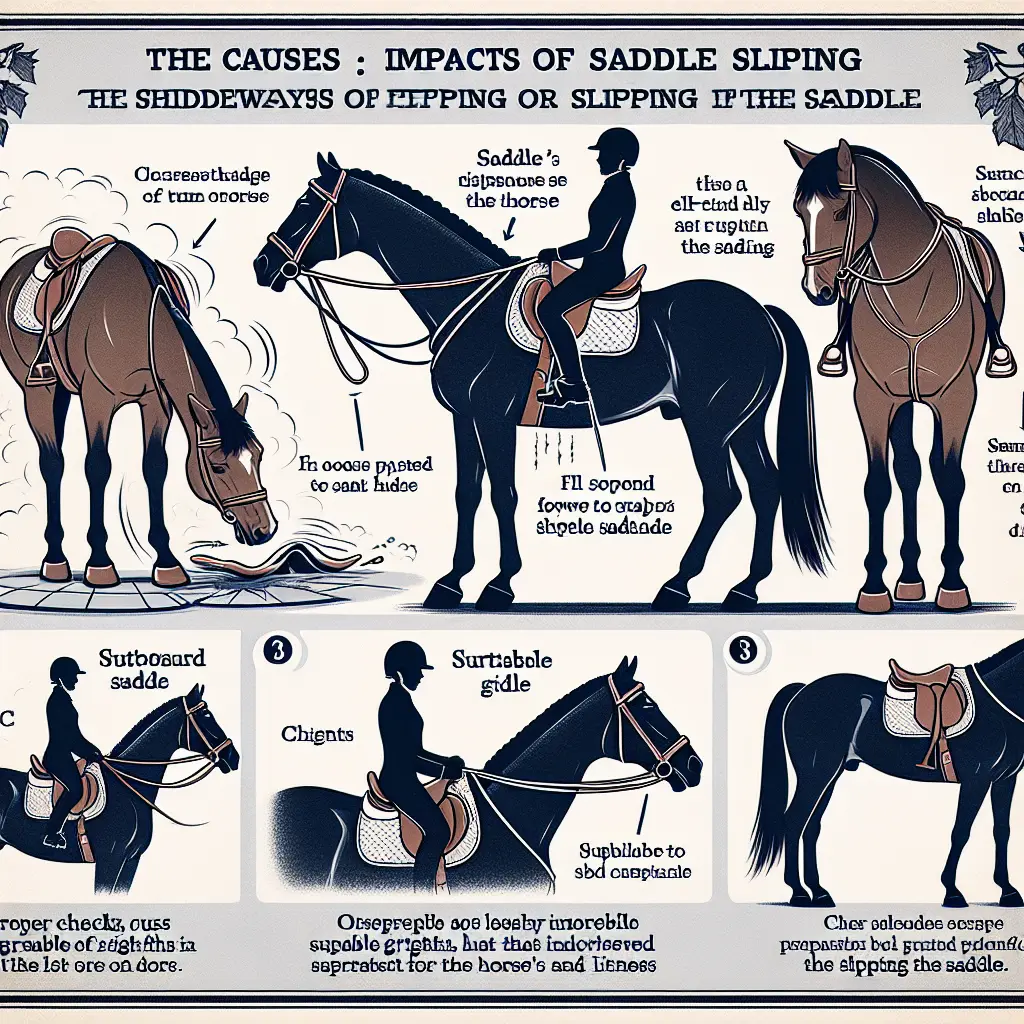When it comes to horse riding, the partnership between rider and horse is essential. But even the most harmonious partnership can sometimes face challenges, and one such issue is saddle slipping. This blog will delve into the causes, impacts, and solutions for saddle slipping, ensuring a safer and more enjoyable ride for both horse and rider.

Understanding Saddle Slipping in Horses
Saddle slipping can occur in various directions — sideways, forward, or backward — and can lead to discomfort for the horse, poor rider biomechanics, and potential safety risks. By understanding the causes, impacts, and solutions, riders can take proactive steps to ensure a comfortable and effective riding experience.
Causes of Saddle Slipping
Incorrect Saddle Placement
Saddles that are placed incorrectly are among the most common causes of slipping. Placing the saddle too far forward can cause it to sit over the shoulder blade, restricting the horse's movement. This often leads to discomfort for the horse and instability for the rider. Saddle placement is critical, and proper alignment should be ensured every time.[1]
Girthing Issues

Using an inappropriate girth can also lead to saddle slipping. A girth that is too loose or improperly positioned may cause the saddle to move[1]. It's important to match the girth type to your horse's body shape. For example, anatomical girths are ideal for horses with large, round barrels[3].
Saddle Fit
A proper fitting saddle is instrumental in preventing slipping. If the tree width does not match the horse's back, slippage can occur[1]. Adjustments in saddle fit may be needed as a horse's body shape changes due to age, diet, fitness, or workload.
Horse Conformation
Horses with unique body shapes such as those with high withers or wider behind than in front may experience increased incidences of saddle slippage[1][5].
Impacts of Saddle Slipping
Rider Biomechanics

A slipping saddle can disrupt rider balance and alter the way cues are given, undermining effective communication with the horse[2]. This may lead to the application of asymmetric pressures, impacting overall rider performance.
Horse Welfare
Saddle slipping is more than just an inconvenience — it impacts horse welfare. To alleviate discomfort from a slipping saddle, a horse might change its locomotion pattern, inadvertently creating more asymmetry and stress[4].
Solutions to Saddle Slipping
Regular Saddle Fit Checks
Regular professional saddle fit checks are essential, ensuring that the saddle fits the horse correctly. It's advisable to have an expert assess the saddle at least once a year or when there are noticeable changes in your horse's body condition[1][3].
Proper Girthing

Ensure the girth used is appropriate for your horse's shape and that it is properly positioned. Options such as short girths with monoflap saddles or anatomical girths are beneficial for particular body types, helping to prevent slippage[3].
Mounting Techniques
Utilizing mounting blocks rather than mounting from the ground will help reduce the strain on the horse's back, preventing the saddle from slipping.[3] This technique is not only better for the horse's comfort but also extends the longevity of your equipment.
Saddle and Girth Adjustments
The correct alignment of your
Conclusion
Saddle slipping can be a multifaceted problem, but with regular checks, understanding palpability of proper practice, and awareness of your horse’s specific needs, you can maintain a safe riding environment for both horse and rider. Embrace the right tools and techniques, and you'll foster a more harmonious partnership with your horse.
For a better riding experience, always ensure that your equipment is the best fit for you and your horse. Explore our premium Jodhpur Collection, and check out our Horse Riding Boot Collection to complete your riding attire. For more related products, visit our homepage at Just Horse Riders.


